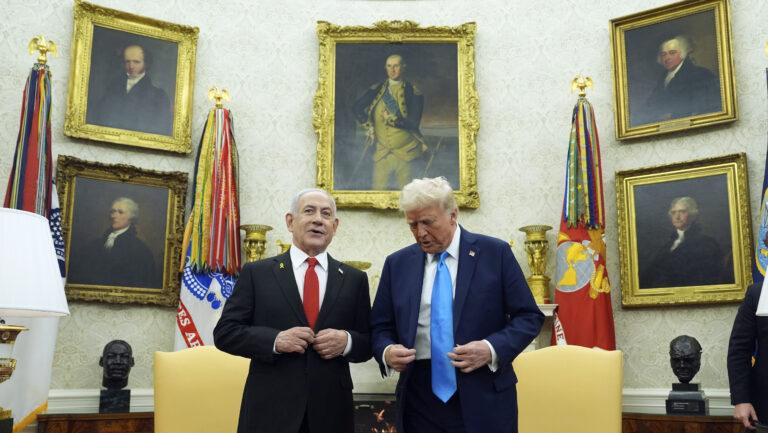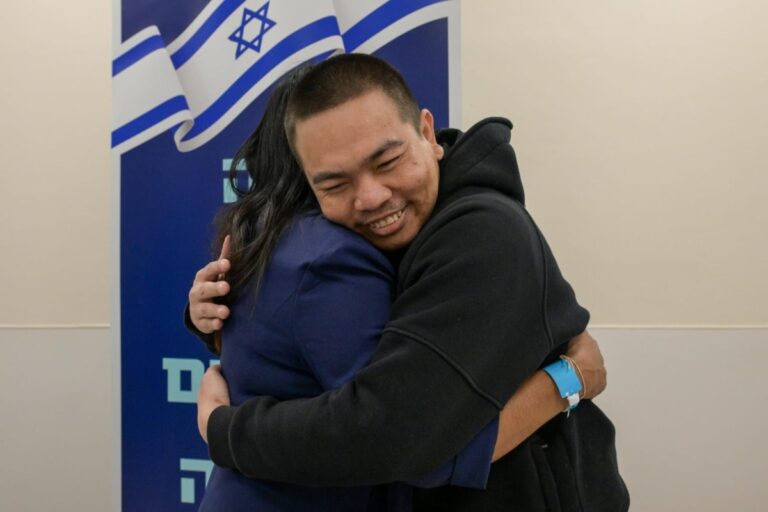 Ever since parshas Beraishis this year, I haven’t been able to attend a chasunah without thinking about the Netziv’s unsettling, if simple, observation.
Ever since parshas Beraishis this year, I haven’t been able to attend a chasunah without thinking about the Netziv’s unsettling, if simple, observation.
Rav Naftoli Tzvi Yehudah Berlin, the famed Volozhiner Rosh Yeshiva, noted that the first marriage in history differed in a most essential way from all the matrimonial unions that would come to follow. Because, according to one mesorah, Adam and Eve were created a single entity, a man-woman, with the “forming” of woman described by the Torah more accurately envisioned as a separation. The word often translated “rib” is in fact used elsewhere in the Torah to mean “side,” and so would be understood in the light of that tradition as referring to the woman-part who was part of Odom-Chava before Divine surgery provided her independent personhood.
So, says the Netziv, Odom’s subsequent union with his wife was in fact a “re-union” – of two entities that had originally been one. That idea, he says, lies in Odom’s declaration when the woman to be known later as Chava is presented to him: “This time it is a bone of my bones, flesh of my flesh” [Beraishis, 2:23]. Comments the Netziv, “Only ‘this time’ is it so, since she is a ‘bone of my bones, flesh of my flesh’; [here, Odom’s love for Chava] is like a person who loves his own hand.”
Not so, though, every marriage to follow, where the two people creating a relationship will have been conceived, born and raised as independent individuals before becoming a marital unit.
What is troubling is that, following the Gemara’s instruction, at every chasuna and sheva brachos seudah are several references to the First Couple (Eden’s, not Washington’s). Not only is the creation of Odom and Chava explicitly invoked, but the chosson and kallah are reminded of how “your Creator made you joyous in Gan Eiden.” How, though, can the comparison be made? The essence of post-Edenic marriages, their emotional and spiritual components, would seem to be of a qualitatively different nature from that of the original one. As per the Netziv’s observation, they are mergers, not homecomings.
Or, to carry the Netziv’s own simile a bit further, they are not like reattaching a severed limb but like transplanting a newly donated one.
Interestingly, the medical metaphor itself may hold the answer to why we hold up the example of Odom and Chava to those marrying. Maybe it is not a comparison that is intended but a spur to thought – the thought that a successful marriage entails striving for a relationship like that of Odom and Chava, who began their lives as a single being.
Consider why transplantation is no simple matter: It commonly entails a risk of rejection.
The natural reaction of a normal body to the introduction of an “other” with its own distinct genetic identity is to seek to show it the door, so to speak. There is good reason for that immune response, of course; it helps protect against the introduction of elements that could be harmful.
Likewise, the natural response of a normal human psyche to the intimate introduction of an “other,” with its own discrete emotional and spiritual identity, is to similarly seek to protect the threatened self.
Doctors help ensure successful transplants by administering immunosuppressant drugs, chemicals that prevent rejection. They operate by lowering the threshold of the immune system’s integrity. Or, put another way, they weaken the host body’s sense of self.
Could it be that we focus a modern chosson and kallah on the first ones in order to teach them that the spiritual-emotional transplant that is a true marriage needs its own form of “immunosuppressant” to succeed – that, in other words, no less than in an organ transplant, marriage requires a weakening of self?
Here, of course, no drug will do; what alone can work is a conscious, determined reorientation of attitude, force of will born of love. In the Netziv’s words about post-Edenic brides and grooms, only “deep connection [“d’veika’] will bring them together, to become one.”
Like everything truly important, of course, that is more easily said than done. But knowing one’s objective is the first step of any journey.
And the second, here, is acting – whether or not one’s actions reflect purity of intent – as if it is not one’s self that is calling the shots. Our mesora stresses that simple deeds can beget essential changes. As the Sefer HaChinuch famously puts it: “A person is acted upon by his actions.” What we do, with the hope and intention of becoming someone who naturally does what we are doing, brings us closer to becoming that person.
And so newlyweds do well to disagree over whether the window should be open or closed. But the chilled spouse should be the one insisting that it remain open, for the comfort of the overheated one; and the latter should be running to shut it, to keep the other warm. Even if the result is a compromise, like leaving the window open a crack, the acts of selflessness themselves are priceless. And they are not limited to windows.
I mused aloud about all that at a sheva brachos seudah for my own daughter and her new husband several weeks ago. Later, though, something else struck me: The marriage-message borne by the Netziv’s observation is not only for newlyweds.
Transplant recipients, after all, generally need to take their medication for life.
© 2007 AM ECHAD RESOURCES
[Rabbi Shafran is director of public affairs for Agudath Israel of America.]











4 Responses
As a kidney transplant recipient, as well as a married person, I find this quite an amusing – and true – analogy. (:-)
i love it. we would do well to read this artice carefully. may all the singles out there be blessed with the right person at the right time, and may all the married ones be blessed with a continuously blessed marriage.
Yasher Kochachem, Rav Shafran LOY”T!
If I may add:
a) The Gemara Kiddushin compares man seeking his Zivug to “Mi SheYiesh Lo Aveidah” (someone looking to recover his loss). Apparently, the heavenly decree of Shidduchim at conception “Arbaim Yom Kodem Yetziras HaVlad…Bas Ploni LiPloni” sets up a Kesher Ruchni (spiritual connection).
b) As Rav Shafran states so eloquently, the difficulty is with the Gashmi (physical) forces working against the Shidduch. Perhaps this is another reason CHAZAL have taught us: “Kashin Zivugim Shel Adam KiKrias Yam Shuf” (accomplishing successful Shidduchim is as difficult [and miraculous] as the parting of the waters of the Sea of Reeds)!
R. Shafran seeks to put too much of a religious spin on marraige; zivug cuts both ways: it can be the source of joy or it can be the primary motive to murder.
If zivug were so transparently and obviously holy, it wouldn’t be created by resorting to checklists or dissolved in a flurry of lawyers and recriminations